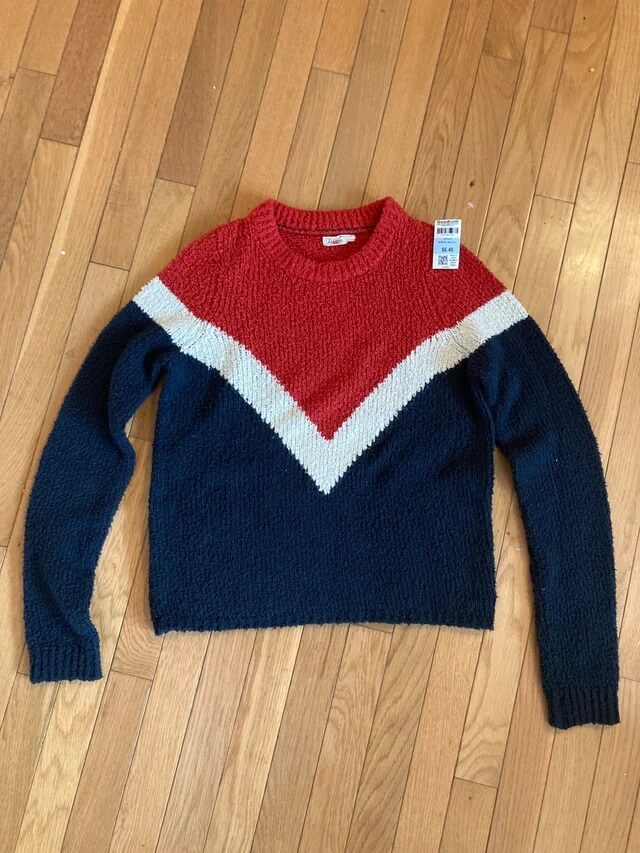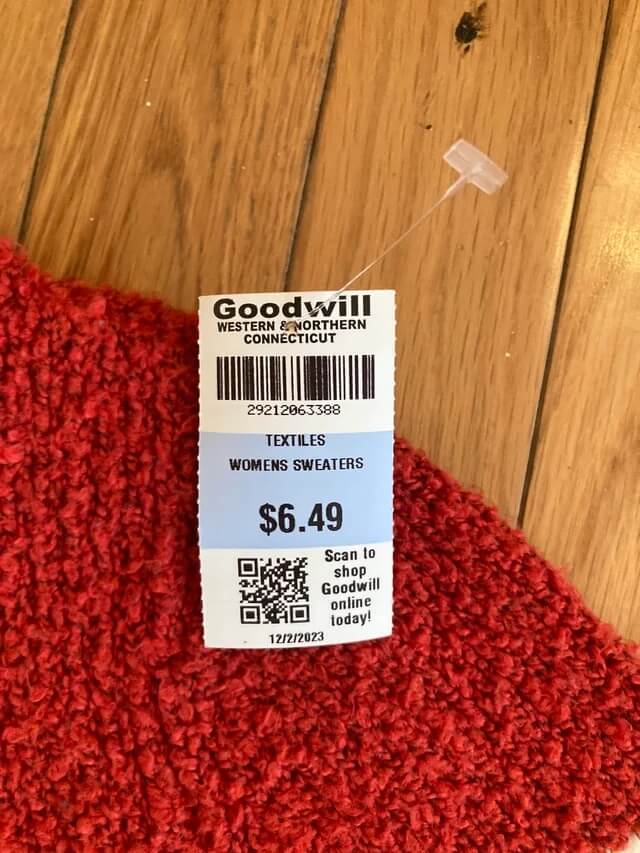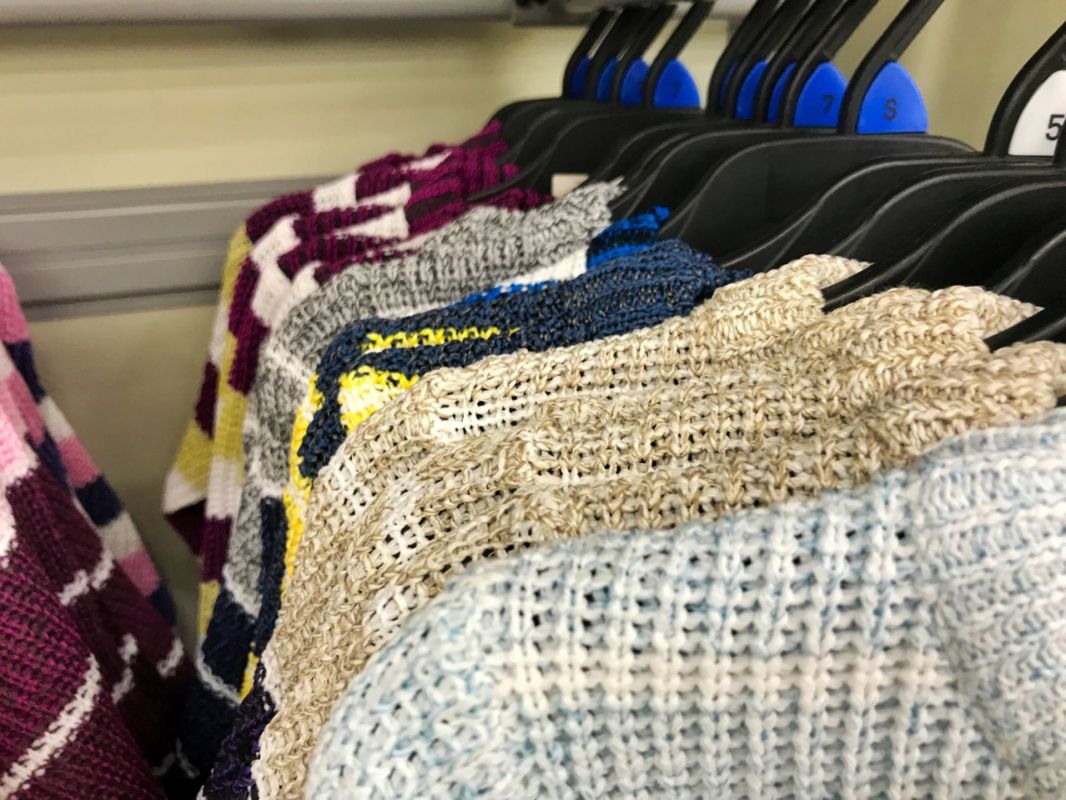A savvy shopper was thrilled recently to find a high-end sweater for a bargain price at their local thrift store.
They posted their find on r/ThriftStoreHauls, including the $6.49 price tag. The color-blocked sweater looks ordinary, but the label inside reveals that it's from the high-end brand Faherty.
"People out here just casually donating a $328 sweater to goodwill," the OP wrote above the photo, adding in a comment, "Would never guess it retailed for as much as it did."


Other users shared similar success stories. "I picked up a $150 handbag recently because it's a lesser known brand. My price was $5 and it came with a wallet!" one person commented. "I bought a [luxury brand] Loro Piana jacket last year for 40 that retailed for 4500 euro [nearly $5,000]," another wrote.
Finding high-quality items for a discounted price is a key draw for thrift shoppers. When buying luxury items second hand, you pay "essentially the sales tax on a retail Zara sweater for a much higher quality piece," another Redditor explained.
It's one reason that thrifting is exploding in popularity, with nearly 60% of Americans shopping second hand. Whether or not you're a brand-conscious shopper, thrifting helps save money on everything you buy. And with Americans spending approximately $1,800 per year on clothing, there's the potential for hefty savings; Coupon Fellow found that shoppers who consistently buy used save, on average, about $1,700 annually.
Even without buying second hand, you can still reap the benefits of thrift stores by donating clothes — which comes with tax kickbacks.
"Wait, you can write off clothing donations on your taxes???" one person commented.
The tax deductions for donations extend beyond clothing as well, to electronics, vehicles, household goods, furniture, and more.
Thrift shopping is also better for the environment, as it avoids subsidizing fast fashion — the practice of manufacturing low-quality, low-cost clothing. Fast fashion is harmful for everyone involved — from garment workers to animals exposed to chemical byproducts.
Textile waste is also an issue; each year, Americans dump more than 20 billion pounds of textiles in landfills, per the most recent data from the U.S. Environmental Protection Agency.
Fortunately, the secondhand market is growing as more consumers prioritize fighting the effects of fast fashion. The 2023 Resale Report from used clothing sellers thredUP reported that globally, the secondhand market is set to nearly double by 2027, reaching a $350 billion value.
Indeed, another Redditor commented, "Second hand fashion feels like it might reverse some of the wrong?"
Join our free newsletter for easy tips to save more, waste less, and help yourself while helping the planet.









